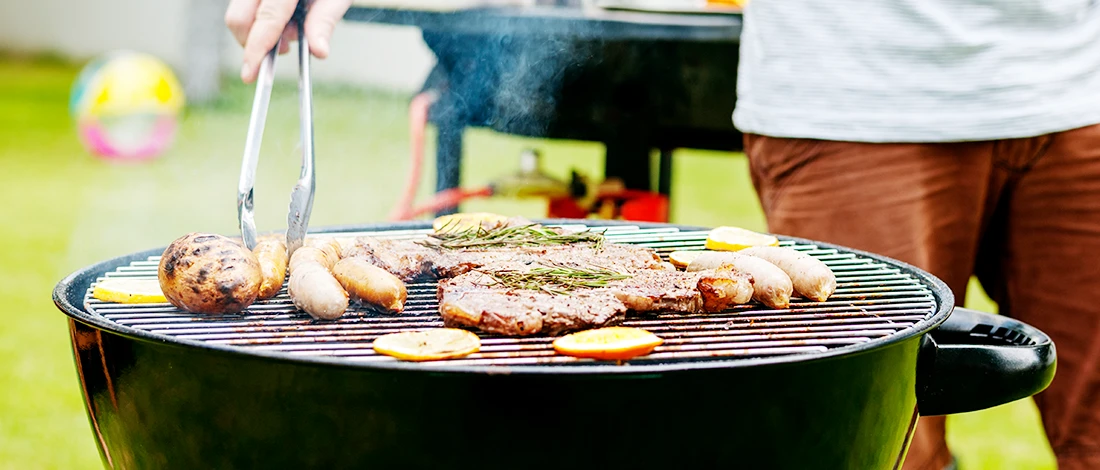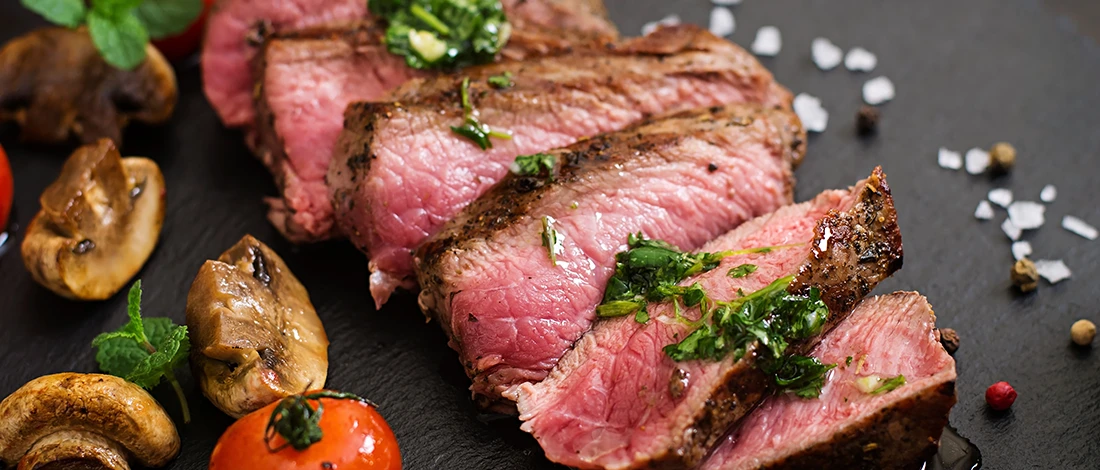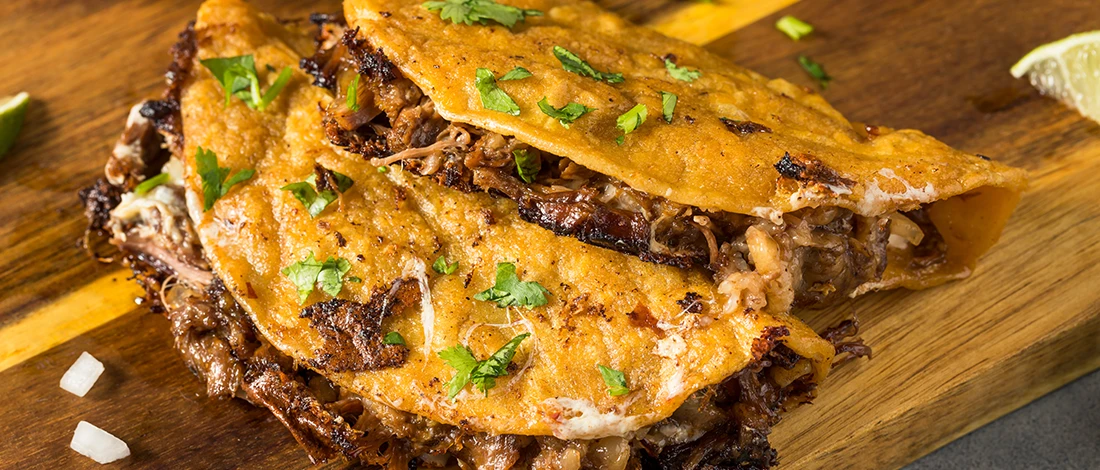Over the past decade, I have tried several times to balance the amount of meat I serve with the number of people, and after several failed attempts, I discovered that the key, it turns out, is balance.
I’ll share my insights to help you figure out just how much meat you should serve, but I’ll also pinpoint a few crucial things to consider before you know what to do.
Quick Summary
- The amount of meat to serve per person varies based on factors like the type of meat, whether it's bone-in or boneless, and the individual's dietary needs.
- Standard portion sizes exist for different meats, with a general rule of thumb being 1.2 to 2 grams of protein per kilogram of body weight for active adults.
- Understanding the yield of meat, which is the amount of edible meat after cooking and removing bones and fat, is crucial in determining portion sizes.
Average Meat Portion Sizes

There are standard portion sizes for meat and other proteins like fish and poultry. We'll use them as a guide when we buy meat.
There is no one-size-fits-all answer to how much protein people need or if there is too much meat. What adults need might be different from what kids or teenagers need.
- Research suggests that if you are a very active average adult, you should eat about 1.2 to 2 grams of protein per kilogram of your weight. A 150-pound person should eat about 82 to 136 grams each day [1].
- When serving meat with only two or three side dishes, use ¾ pound or 12 ounces (340 gr) of meat [2].
Teens should eat around 5½ ounces of protein-rich foods every day [3].
Read More: How Much Meat per Person for BBQ?
Know Your Yields
You can determine just how much meat to buy by knowing your average yield.
Meat Cuts
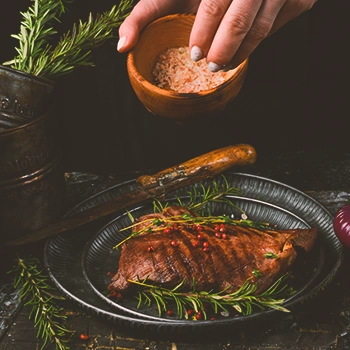
When you decide how much meat per person needs, remember to include the bones that won't be eaten.
You can choose to have boneless meat. Boneless meat cuts produce more meat than if you had the bones in.
However, in some types of meat like chicken or grilled pork, bones enhance the flavor and make the meat juicier. Bones also help keep the moisture inside the meat while it is cooking.
For bone-in meat cuts, allow ¾ pound of meat per person. For boneless preparations, smaller portions are recommended [4].
Meat Mass-Loss
If you are struggling to know how much raw meat is needed per person, remember that the general rule of thumb for cooking meat is a 20% loss of weight during the cooking process.
This means that for every 1 pound (453 g) of raw meat you start with, you'll end up with about ¾ pounds (340 g) of cooked meat per person [5].
The real meat weight is how many pounds of meat you serve to your guests. When you take into account the bones, fat, and cooking process, ground meat yields about 70% of the raw weight [6].
To better understand how much meat per person you need, you must know that fattier meats have lower yields, which means there is more meat per person. Unlike meats with lower fat, will most likely have less meat.
9 Serving Portions Based on Type of Meat
There are serving size guidelines for the different types of meat. While the method of cooking and the addition of sauces or gravies can affect these amounts, the USDA gives suggested cooked portion sizes per person [7].
1. Chicken
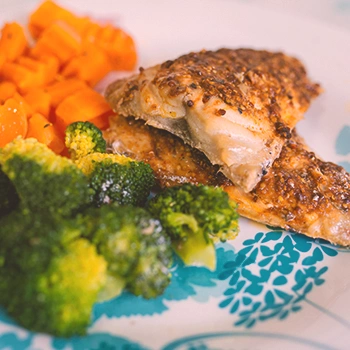
When it comes to figuring out how much chicken is served per person, sometimes it's easier to plan by counting the number of chicken pieces instead of weight.
For example, boneless chicken breasts come in sizes from 4 to 8 ounces. But for bulk meat like boneless thighs, we will figure by the pound.
If you are serving other meats and dishes, use 1.5 pieces of boneless chicken breast meat per person. If you are serving bone-in chicken, plan on ¼ of a whole chicken or two pieces of meat per person. Serving chicken wings and breasts or drumsticks and thighs meat per person [8].
If you plan to serve chicken wings, you will need about 6-10 per person.
Read More: How to Prepare Boneless Chicken Wings?
2. Turkey
When it comes to figuring out how much turkey you should serve per person, the average bird will feed about 14 people. Of course, how many pounds we need depends on whether your guests are big eaters or not.
The rule of thumb for turkey is 1 pound per person. So, if you have a ten-pound turkey, that should be enough for ten people. It would help if you bought a bird that is 14 to 16 pounds so that people will have good meat to eat.
"When you buy a whole turkey, a lot of it is bone; that's why, for smaller gatherings, go all the way to 2 pounds per person to maximize leftovers. For four to six people, 11 to 13 pounds is a good range,"
- Jessie YuChe, Assistant Food Editor
3. Pulled Pork
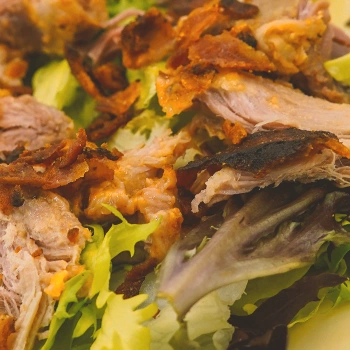
How much pulled pork butt is served per person is mainly based on if you buy it bone-in or bone out.
There is a lot of loss, between 35% to 50%, from bones, and the fat either melts during cooking or gets trimmed away. You can usually get 4.5 lb of pulled pork meat from an 8 lb.
Pulled pork butt will feed 10 to 15 people depending upon appetite and side dishes. I suggest you plan on serving 1/4lb per person for sandwiches and 1/3 lb for plates.
4. Beef Brisket
To know how much brisket you need, I suggest you plan on 1/2 lb per person for sandwiches and 3/4 lb for plate dishes. Whole beef brisket yields close to 50% of the actual weight, which can range from 5 to 20 pounds.
A five-pound brisket will feed approximately 10 people sandwiches or 6 people a plate with sides. A 10-pound brisket will feed 20 people sandwiches or 12 people a dish with sides.
I recommend cooking two smaller briskets for large groups rather than one large one. This will allow you to control the cooking process and result in a juicier and more tender brisket.
5. Beef Tenderloin
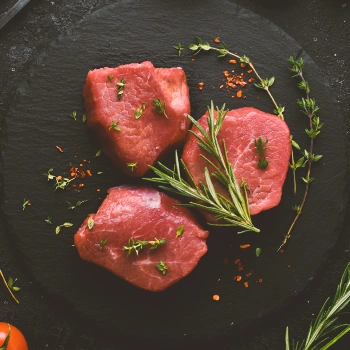
Beef tenderloin is the most tender and expensive cut of beef. It is also the leanest, which means there is less shrinkage during cooking.
For the main course, plan on 6 to 8 ounces per person. If you are serving it as part of a larger meal or buffet, 4 ounces per person should be sufficient.
Beef tenderloin loses 25% of its weight during cooking due to fat loss, moisture evaporation, and the shrinkage of the muscle fibers. When served with heavy side dishes, a portion size of 2 to 4 ounces per person is appropriate.
A 4-ounce platter is the perfect portion size if you're celebrating with mostly adults. However, long weekends and festivals tend to raise people's appetites. If you don't have any more entrees to go with the beef tenderloin, serve 4 to 6 ounces of beef per person.
6. Steak
Steak is also a popular meat choice; however, how much steak you need to serve per person is defined based on the meat type.
If you are looking for steaks with bones, like T-bones and porterhouses, or those with more fat, like rib eyes, you will need to buy more per person. This is because the yield will be less. That means you need more meat on each steak.
The following yields are based on buying individual, pre-cut steaks that are about 1-inch
thick. This can give you an understanding of how much meat per person is needed to be served.
- T-bone — 77%
- Porterhouse — 77%
- N.Y. Strip Steak — 89%
If you want to serve a bone-in steak, I recommend that you buy about 17 ounces per person. If you want to serve a boneless steak, you will need to buy between 13 and 14 ounces per person [9].
7. Ribs
People usually estimate how much rib roast or beef ribs or pork ribs they need by counting them. For example, a half rack of baby back ribs has 6-7 ribs.
You can estimate that 3 beef ribs per person will be enough for large buffets with other meat and sides. I would suggest you go for spare ribs rather than the baby back ribs if you invite many people and want to serve larger amounts of meat.
8. Fish
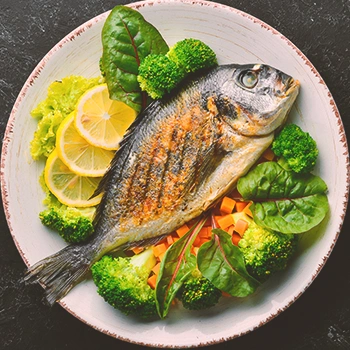
To determine how much fish you need, like bass and salmon, an 8-ounce portion of meat per person is a typical serving size.
About 30% of the weight will be lost when you cook the fish. You will need about 11.4 ounces of raw fish meat per person if you are cooking steaks or fillets.
Of course, this all depends on the type of fish. A larger and fattier fish, such as salmon, will yield less than a smaller and leaner fish, such as tilapia.
I would recommend getting 1 1/2 to 2 pounds of raw meat of fish for every three people for a dinner party. This way, you will have leftovers or can adjust the servings depending on how many people show up.
9. Lamb
Lamb is special occasion raw meat, and I always opt for it during any special occasion celebration in my family. It is expensive and not as easy to find as other meats. For this reason, you might want to serve it only to close friends and family.
The average lamb chop weighs between 2 and 4 ounces. A good rule of thumb is to allow 1/2 chop per person. This means that you will need 2 chops for every 4 people.
You will need about 1/2 pound per person for a rack of lamb. This will give you two 3-ounce chops per person.
7 Tips to Measure and Control Portion Sizes

Here are some tips to help you measure and control your cooked meat portion sizes, both at home and when you're out.
1. Use Smaller Dinnerware
Studies suggest that the size of plates, spoons, and glasses can unconsciously influence how much food someone eats [10].
As a result, replacing your usual plate, bowl, or serving spoon with a smaller alternative can help you eat less food while still enjoying the cooked meat meal. People feel just as full after eating from a small dish as they do after eating from a large one [11].
2. Use Your Plate as a Portion Guide

If you don't want to measure or weigh your food, try using your plate or bowl as a guide for how much to eat cooked meat. This can help you figure out the right mix of macronutrients for a balanced meal [12].
A rough guide for each meal per person is:
- Vegetables or salad: Half a plate
- High-quality protein: One-Quarter of a plate includes meat, poultry, fish, eggs, dairy, tofu, and beans.
- Complex carbs: One-fourth of your plate should be filled with complex carbs like whole grains, starchy vegetables, and legumes
- High-fat foods: Half a tablespoon of unhealthy fats, including cheese, oils, and butter.
This is a rough guide that I like to follow by, but remember that people have different dietary needs.
3. Use Your Hands as a Serving Guide

Another way to measure how much cooked meat you need to serve per person is to use your hands. People who need more food usually have bigger hands [13].
A rough guide for each meal per person is:
- High-protein foods: A serving the size of your palm for women and two servings the size of your palm for men, such as meat, fish, poultry, and beans.
- Vegetables and salads: Women should eat one fist-sized portion, and men should eat two fist-sized portions.
- High-carbohydrate foods: One cupped-hand portion for women and two for men — such as whole grains and starchy vegetables.
- High-fat foods: One thumb-sized portion for women is two for men with items like butter, oils, and nuts.
4. Ask for a Half Portion When Eating Out
You can ask for a half portion or a children's dish if you are eating out. This will help you save calories and prevent overeating [14].
However, what worked better for me was to order a side salad or vegetables, request sauces and dressings to be served separately, and avoid buffet-style all-you-can-eat restaurants where it is easy to overeat.
5. Start All Meals With a Glass of Water
Drinking a glass of water up to 30 minutes before a meal will help you control your portion size. When you're full, you'll feel less hungry, and being well hydrated will help you distinguish between hunger and thirst.
6. Eat Slowly
When you eat quickly, you are not as aware of how full you are getting. This means that you are more likely to overeat. Your brain takes around 20 minutes to realize that you have had enough to eat, so you will eat less overall by slowing down.
7. Don't Eat Straight From the Container.
If you're trying to eat healthily, I highly recommend that you put snacks and food into a small bowl instead of eating them from the package. That way, you won't eat more than you need.
The same goes for family meals. Instead of serving the food right from the stove, please put it on plates first so people won't go back for seconds.
FAQs
How Much Meat Do I Need for 25 Adults?
You'll need about 12-1/2 pounds of meat for 25 adults. If you want to be extra safe, calculate half a pound per person.
How Much Meat Should a Person Eat a Day?
A person should eat around 0.5-1 grams of meat per pound of body weight.
How Many People Will 10 Lbs of Meat Feed?
10 lbs of meat will feed 10-12 people. It will also differ depending on how much other food is served with the meat.
References:
- https://www.mayoclinic.org/healthy-lifestyle/nutrition-and-healthy-eating/in-depth/nutrition-rules-that-will-fuel-your-workout/art-20390073
- https://data.nal.usda.gov/dataset/usda-table-cooking-yields-meat-and-poultry
- https://www.johnmuirhealth.com/health-education/health-wellness/childrens-health/nutrition-teens.html
- https://data.nal.usda.gov/dataset/usda-table-cooking-yields-meat-and-poultry
- https://www.cdc.gov/diabetes/prevention/pdf/handouts.pdf
- https://meat.tamu.edu/ground-beef-labeling
- https://data.nal.usda.gov/dataset/usda-table-cooking-yields-meat-and-poultry
- https://professional.diabetes.org/sites/professional.diabetes.org/files/media/15_what-can-i-eat_POD_food-labels_v2_proof2_0.pdf
- https://www.ars.usda.gov/ARSUserFiles/80400525/data/retn/usda_cookingyields_meatpoultry.pdf
- https://pubmed.ncbi.nlm.nih.gov/15761167/
- https://www.healthline.com/nutrition/portion-control
- https://www.healthline.com/nutrition/best-macronutrient-ratio
- https://pubmed.ncbi.nlm.nih.gov/16187319/
- https://www.healthline.com/nutrition/how-many-calories-per-day


